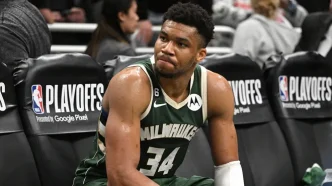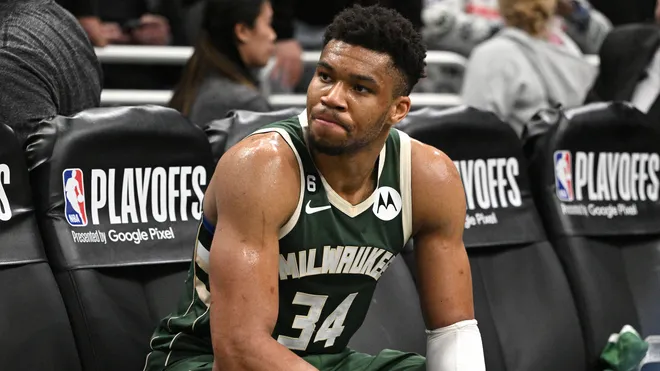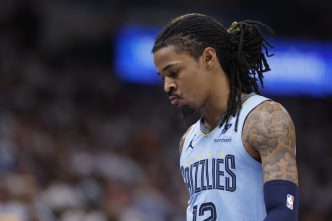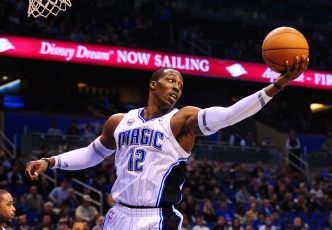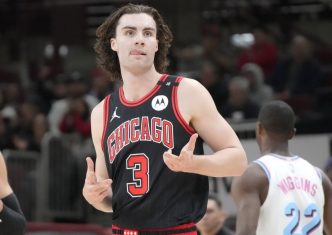The Milwaukee Bucks find themselves at a crossroads, and there’s no denying it: the championship window is all but shut. With Damian Lillard sidelined due to an Achilles injury—a crushing blow that has sent shockwaves through the organization—the central question looms large: Will the Bucks trade Giannis Antetokounmpo, and if so, when will that happen?
Lillard’s injury carries a haunting irony, reminiscent of how his previous team, the Portland Trail Blazers, saw their aspirations dashed back in 2015. That season, a similar injury to Wesley Matthews derailed a promising campaign. The Blazers eventually faced a gut-wrenching first-round exit, leading to a full-scale rebuild that took years to materialize. Now, the Bucks find themselves on a potentially parallel path, facing a bleak endgame as they grapple with a roster that appears increasingly incapable of contending at a high level.
The road ahead is undeniably rocky for Milwaukee. With Lillard out of commission, the chances of making a serious playoff push have evaporated. The team boasts a dearth of promising young talent and minimal draft assets to maneuver. Beyond Giannis, the Bucks have free agents like Brook Lopez and Bobby Portis, but their ranks thin drastically after that. The other high-salary contracts on the books include Lillard—who may miss a substantial portion of the upcoming season—and Kyle Kuzma, who simply isn’t a game-changer.
Even with Antetokounmpo—one of the league’s elite players—Milwaukee has struggled. Despite ending last season as a fifth seed, their performance together with Lillard in the lineup yielded only a modest net rating, falling short of true contender metrics. As the reality sets in, questions arise about the sustainability of Giannis’ prime years in Milwaukee, flanked by increasingly mediocre talent.
In light of Lillard’s absence, the Bucks face the unenviable task of either keeping Giannis happy during a potentially dismal stretch or contemplating an all-out rebuild. A worst-case scenario looms where they might only hope to secure a sixth seed and face another early playoff exit. While the 2027 timeline looks better with Lillard’s contract finally off the books, the lack of young prospects will still haunt the organization.
The Bucks have made commendable efforts to build around Giannis, even venturing deep into the luxury tax to try to maximize their chances. Yet, the fear of once again hanging onto a superstar amidst declining prospects echoes throughout the league: when is it better to pull the plug rather than cling to fading hopes?
Flirting with the idea of a trade, the Bucks could potentially look to move Lillard to a contender like Phoenix in exchange for a younger talent like Bradley Beal, effectively attempting to revamp their roster. Other strategic moves might involve using future draft assets to adapt their aging core, but the specter of Lillard’s two years in Portland lingers—reminding us how desperate attempts to extend a championship window can culminate in regrettable contract situations and dashed ambitions.
Trading Giannis would be no easy decision, especially with the knowledge that such stars are rare commodities. The Bucks might find escaping their current predicament challenging, given their lack of assets for a rebuild. Unlike other teams that can pursue a full overhaul, Milwaukee’s past decisions have tied up their future picks, making a tanking strategy unlikely.
However, there are some potential avenues. Teams like the Houston Rockets and Brooklyn Nets have the draft capital needed to make a significant deal. Houston could offer intriguing pieces like Amen Thompson, along with tantalizing future picks. Brooklyn would not be able to match talent but could provide ample draft capital and relief through expiring contracts that could help facilitate a shift.
Looking at the broader league landscape, teams such as San Antonio and Toronto could also come into play. While Bucks fans may dream of landing Victor Wembanyama, players like Stephon Castle or Scottie Barnes could similarly shore up the future while creating pathways for a rebuild.
In the face of these realities, the Bucks’ management is at risk of being bogged down by nostalgia and attachment to their superstar rather than proactively addressing their glaring issues. The league has learned that prolonged indecision can have long-lasting, detrimental effects—a lesson the Bucks would do well to heed.
The signs are clear following Lillard’s injury: it’s time for decisive action. It may feel daunting to pivot to a rebuilding phase, but history shows slow burns often lead to a prolonged agony. Embracing a new direction and opening a bidding war for Antetokounmpo could set the stage for the Bucks to reclaim their footing—something crucial at this juncture of their franchise’s evolution. The past may have its echoes, but the choice ahead will shape their future.

